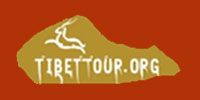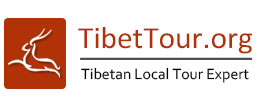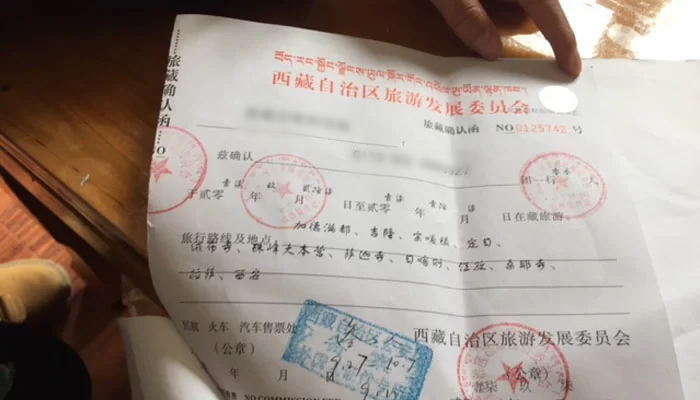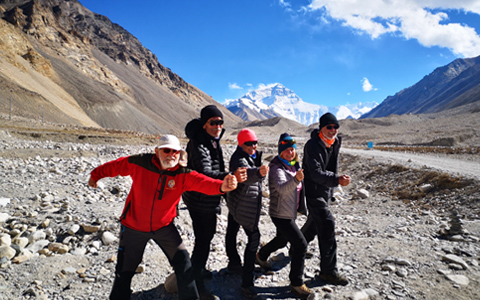Nepal, a land of towering mountains, vibrant cultures, and diverse ecosystems, beckons travelers throughout the year. To truly make the most of your visit, it’s essential to understand the weather and climate. From the majestic peaks of the Himalayas to the lush, sub-tropical lowlands, each region of Nepal presents unique experiences that are best enjoyed at specific times of the year. This guide will help you navigate the best times to visit Nepal based on your interests, ensuring that your journey through this enchanting land is both memorable and fulfilling.
Overall Weather and Climate in Nepal
Nepal's weather is diverse, influenced by its varied geography. It features four distinct seasons: winter, spring, summer, and autumn, each presenting a different aspect of Nepal's beauty.
From December to February, winter sets in, bringing clear skies and cooler nights. While snow blankets the high mountains, the lowlands remain snow-free, making it a serene time to visit if you can handle the chill. January is the coldest month, resulting in fewer tourists and quieter sightseeing, with many hotels offering cozy amenities like fireplaces and hot water bottles.
The spring season, from late March to May, is one of most popular times for tourists. The weather warms up, skies remain clear. Although temperatures rise as April approaches, the heat is manageable, making it a great time for trekking as nights can still be cool. By May, humidity increases, and showers begin to appear as the region prepares for the monsoon.
 Spring is one of most popular times for tourists in Nepal.
Spring is one of most popular times for tourists in Nepal.From June to August, the summer monsoon brings hot days (up to 30°C) and high humidity. Most rainfall occurs at night due to Nepal's unique topography, creating stunning morning scenery. While trekking isn't advisable during this season, the vibrant city of Kathmandu thrives, offering a lively atmosphere.
As the monsoon subsides in August, September welcomes fresh air and clear skies, revealing breathtaking mountain views. October and November mark the prime trekking season, with dry days and cool nights enhancing the experience. The lower landscapes turn a lush green after the rains, and wildlife becomes easier to spot as the terrain dries out, making it an exceptional time to explore Nepal's natural beauty.
Monthly Weather in Nepal
| Month | Max Temperature (°C) | Min Temperature (°C) | Average Clear Days | Average Rainfall (mm) |
|---|
| January |
19 |
3 |
25 |
15 |
| February |
21 |
5 |
23 |
20 |
| March |
25 |
8 |
22 |
35 |
| April |
28 |
12 |
20 |
55 |
| May |
30 |
15 |
16 |
125 |
| June |
29 |
18 |
10 |
250 |
| July |
28 |
20 |
8 |
370 |
| August |
28 |
20 |
8 |
345 |
| September |
27 |
19 |
12 |
175 |
| October |
26 |
15 |
20 |
60 |
| November |
23 |
9 |
24 |
10 |
| December |
20 |
4 |
26 |
10 |
Best Time to Visit Nepal for Trekking: March to May and September to November
For trekking enthusiasts, the best times to explore Nepal's breathtaking trails are during the spring and autumn months. From March to May, the weather is mild, with temperatures ranging from 15°C to 25°C in the lower elevations. This season is also characterized by blooming rhododendrons that paint the hillsides in vibrant colors, creating a picturesque backdrop for your trekking adventures. Popular routes like the Annapurna Circuit and Everest Base Camp become accessible, offering stunning views that are hard to forget.
Autumn, from September to November, is another prime trekking season. By September, the monsoon rains typically clear, leaving behind lush greenery and crisp air. The weather during this period is stable, with temperatures ranging from 10°C to 20°C at lower altitudes, making it comfortable for trekkers. Visibility is often excellent, allowing for breathtaking panoramas of the majestic mountains.
 Autumn is another prime trekking season in Nepal.
Autumn is another prime trekking season in Nepal.If you can withstand the cold, January and February also provide excellent trekking opportunities in Nepal. During these months, you can enjoy quieter trails in the lower altitude regions. However, it’s essential to note that high-altitude hiking is not advisable due to the frigid temperatures.
Best Time to Visit Kathmandu in Nepal: September to May
Kathmandu, the vibrant capital of Nepal, is a must-visit destination for any traveler. The best time to explore this bustling city is from September to May, when the weather is relatively mild. Particularly, the months from September to November are ideal, as the post-monsoon skies are clear, providing stunning views of the surrounding mountains.
While winter, from December to February, can be chilly, it offers a wonderful opportunity for those who prefer fewer crowds and don’t mind the cooler temperatures. These months often feature sunny days, making it perfect for sightseeing and immersing yourself in Kathmandu's rich cultural heritage.
 Kathmandu is a must for any tourist to Nepal.
Kathmandu is a must for any tourist to Nepal.In spring, from March to May, temperatures gradually warm up, and this is also the season when rhododendrons bloom. The Kathmandu Valley transforms into a beautiful sea of colorful flowers, enhancing the city’s charm and offering a delightful experience for visitors.
Best Time to Visit Pokhara in Nepal: October to April
For those drawn to the stunning lakes, panoramic mountain views, and adventure sports in Pokhara, the best time to visit is from October to April. This period coincides with Nepal's dry season, offering excellent visibility in the mountainous areas and breathtaking views of the Himalayan peaks.
During these months, you can indulge in a wide range of activities, from boating on Phewa Lake to paragliding over the spectacular landscape. The views of the Annapurna range are particularly exceptional, making it a photographer's paradise. If you choose to visit in winter, you can experience the serene beauty of the city, though you may encounter cooler temperatures, especially in the evenings.
 Pokhara offers panoramic mountain views of Nepal.
Pokhara offers panoramic mountain views of Nepal.Best Time to Visit Nepal Chitwan National Park: October to March
Chitwan National Park, located in the Terai lowlands, experiences a tropical monsoon climate. While the park is open year-round, the best time to visit is during the dry season from October to March. During this period, the weather is cooler and drier, making it ideal for wildlife viewing and outdoor activities like jungle safaris and birdwatching.
 The best time to visit Chitwan National Park is during the dry season.
The best time to visit Chitwan National Park is during the dry season.January to March also provides excellent opportunities for wildlife spotting, as the annual cutting of grasses makes it easier to see plains animals in their herds. This period not only enhances visibility but also allows for a richer wildlife experience in the park.
Best Time to Visit Nepal for Festivals: March, September and October
Nepal is a land of festivals, each celebrated with great enthusiasm and cultural significance. The best times to experience the vibrant festivals are in March, September, and October. March marks the celebration of Holi, the festival of colors, where locals and tourists alike participate in joyous celebrations, throwing colored powders and water at each other. This festival is a delightful way to immerse yourself in Nepalese culture and connect with the local community.
 Nepal Holi Festival
Nepal Holi FestivalIn September, the festival of Dashain, one of the most significant Hindu festivals in Nepal, is celebrated. This festival signifies the victory of good over evil and is marked by family gatherings, prayers, and feasting. The atmosphere in Kathmandu and other cities is vibrant, with decorations and festivities taking place throughout the streets.
 Nepal Dashain Festival
Nepal Dashain FestivalOctober brings Tihar, the festival of lights, which is celebrated over five days. Each day is dedicated to honoring different animals, including crows, dogs, and cows, and culminates in the worship of Goddess Laxmi, the goddess of wealth. Experiencing these festivals firsthand allows travelers to witness the rich cultural tapestry of Nepal.
 Nepal Tihar Festival
Nepal Tihar FestivalBest Time to Visit Nepal for More Different Experiences
Nepal offers a wealth of unique experiences beyond trekking and cultural exploration. Discovering the best times for these activities can significantly enhance your visit.
Best time for water rafting in Nepal
With its diverse topography and climate, Nepal boasts some of the best white-water rafting in Southeast Asia, ranking among the top ten rafting locations in the world. The prime rafting season typically runs from September to mid-December and from March to early June. From mid-October onwards, the weather becomes more stable, making it one of the best times for rafting. While many rivers may be too cold for enjoyment in late December, shorter trips are still possible for the adventurous at heart.
 Water Rafting in Nepal
Water Rafting in NepalBest time to paraglide in Nepal
Paragliding is a relatively new adventure sport in Nepal, but it is rapidly gaining popularity among thrill-seekers. This exhilarating experience offers breathtaking views of the majestic Himalayan landscapes as you soar high in the air, sharing the skies with Himalayan griffon vultures, eagles, and kites while gliding over picturesque mountain villages. As a weather-dependent activity, the paragliding season in Nepal runs from November to February, with November and December being the optimal months for flying.
 Paragliding is a relatively new adventure sport in Nepal.
Paragliding is a relatively new adventure sport in Nepal.Best time to see rhododendrons in Nepal
Rhododendrons in Nepal, known as Gurans, are indigenous to the high Himalayas. Moreover, they are the national flower of Nepal, so you can expect to see them almost everywhere you trek. With more than 500 species of rhododendrons across Nepal, trekking among the numerous rhododendron forests is truly stunning. The best time to see these beautiful trees and shrubs in full bloom is from March to May, when the large, showy flowers are at their peak.
 You can expect to see rhododendrons almost everywhere you trek in Nepal.
You can expect to see rhododendrons almost everywhere you trek in Nepal.Worst Time to Visit Nepal: Monsoon Season of June to August
While Nepal is a breathtaking destination, the monsoon season from June to August poses challenges for travelers. During this time, heavy rainfall can disrupt travel plans, leading to landslides and transportation delays, particularly in the hilly regions. The humidity is high, and trekking trails may be slippery and less accessible. Additionally, visibility can be poor, obscuring the majestic mountain views that draw many to Nepal. For those planning a visit, it’s advisable to avoid this season unless you're specifically looking to experience the lush green landscapes and don’t mind the rain.
Conclusion
Nepal offers a variety of experiences, each best enjoyed during specific times of the year. Whether you're trekking in the Himalayas, exploring the cultural richness of Kathmandu, or seeking adventure in Pokhara, understanding the weather patterns can significantly enhance your experience. By choosing the right time to visit based on your interests, you can create unforgettable memories in this beautiful land. If you have more questions about Nepal, Tibet, or Bhutan travel, feel free to contact us.

























 Spring is one of most popular times for tourists in Nepal.
Spring is one of most popular times for tourists in Nepal.
 Autumn is another prime trekking season in Nepal.
Autumn is another prime trekking season in Nepal. Kathmandu is a must for any tourist to Nepal.
Kathmandu is a must for any tourist to Nepal. Pokhara offers panoramic mountain views of Nepal.
Pokhara offers panoramic mountain views of Nepal. The best time to visit Chitwan National Park is during the dry season.
The best time to visit Chitwan National Park is during the dry season. Nepal Holi Festival
Nepal Holi Festival Nepal Dashain Festival
Nepal Dashain Festival Nepal Tihar Festival
Nepal Tihar Festival Water Rafting in Nepal
Water Rafting in Nepal Paragliding is a relatively new adventure sport in Nepal.
Paragliding is a relatively new adventure sport in Nepal. You can expect to see rhododendrons almost everywhere you trek in Nepal.
You can expect to see rhododendrons almost everywhere you trek in Nepal.







Ask a Quick Question